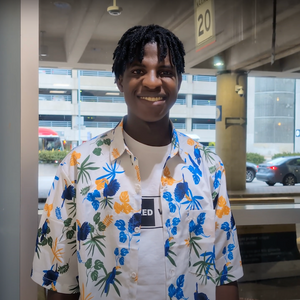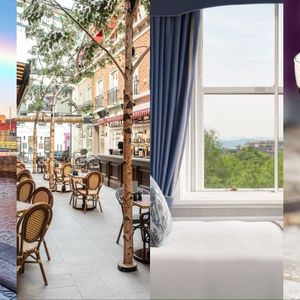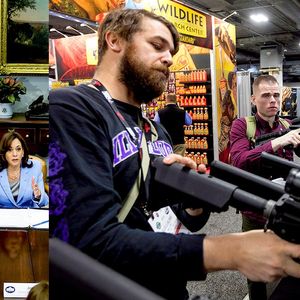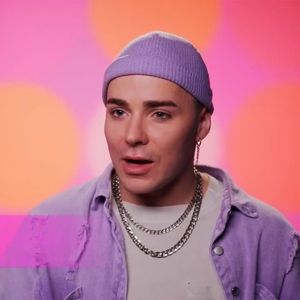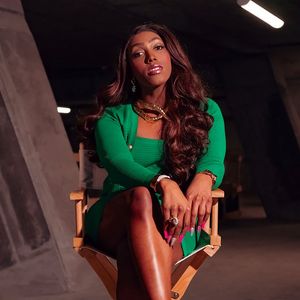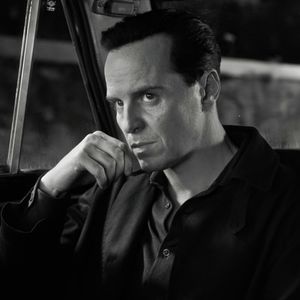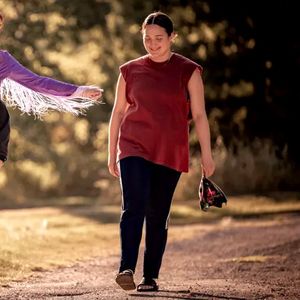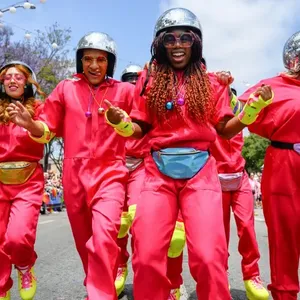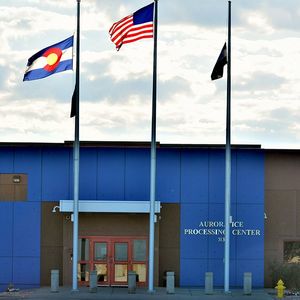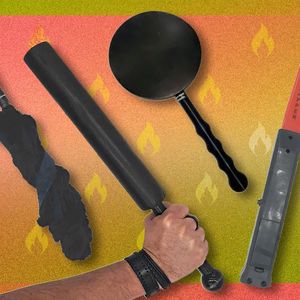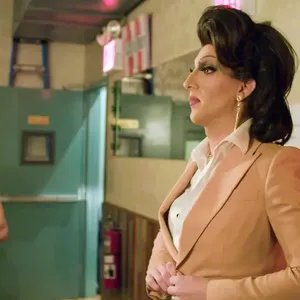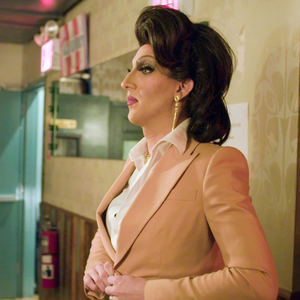This month a fight broke out across the blogosphere. Conservatives complained that the so-called liberal media had ignored the case of illegal abortion provider Dr. Kermit Gosnell (pictured) prior to his trial, which began in Philadelphia on March 18. The assertion was that there had been a conspiracy of silence.
I felt my blood pressure rise. I had been reporting on Gosnell for a local newspaper in Philadelphia since January 2011 when he was first arrested.
I took to Twitter, responding to every post I saw mentioning the case. My argument–in addition to links to my own articles–was that conservatives themselves had ignored the Gosnell case because of the identity of his victims: poor women, young women, women of color, undocumented women.
By the end of the day, I’d been retweeted by a host of other journalists as well as some women’s health advocates. I had also become embroiled in arguments with women and men who demanded to know how I could live with myself, since they said Gosnell was what abortion was all about. Some even sent me graphic photos of bloodied dead babies.
Gosnell can’t be explained in 140 characters. Gosnell, however, is not what abortion is about. Gosnell is what happens when lack of regulation meets poverty and greed. Gosnell is an increasingly likely scenario for women. Gosnell is where restrictions on women’s health care is pushing America.
Gosnell is our nightmare cautionary tale.
The complicated story of Dr. Kermit Gosnell goes back 40 years to when he opened a clinic in West Philadelphia. The Women’s Medical Society was founded in 1972, before Roe v. Wade, when abortion was legal in very few states. Pennsylvania was not one of them.
Housed in a converted late-Victorian brick building less than a dozen blocks from the Ivy League campus of the University of Pennsylvania and at the intersection of two worlds–the upscale homes of middle-class professionals in the Powelton Village section and the drug-infested, gang-ridden, poverty-stricken Mantua neighborhood, the clinic specialized in abortion.
It was almost never those middle-class neighbors that Gosnell serviced. It was almost always the poor, mostly young and mostly black women seeking an end to pregnancies they could neither handle nor afford. The majority of Gosnell’s clients were teens and women under 25 or mothers who already had several children. Gosnell was their last resort–the only doctor performing abortions after the first trimester in a state where the Abortion Control Act has made abortions after 20 weeks illegal. Late-stage abortions can only be performed in a hospital or surgi-center after they are approved. Women must also be informed of the effects of abortions past the 20-week cut off.
Weeks of lurid, grotesque testimony has yet to explain when Gosnell changed from a physician caring for indigent and desperate women into a sociopathic monster who preyed on those same women for money.
Gosnell is on trial for allegedly killing immigrant Bhutanese refugee Karnamaya Mongar, 41, a mother of four who spoke no English. He is also accused of killing or ordering his staff to kill seven babies born alive by what his staff said he called "snipping"–stabbing scissors into the base of their skulls and cutting their spinal cords. Testimony has described cries of these newborns as well as screams of women patients.
What happened at Gosnell’s clinic was nothing short of barbaric, yet early witnesses described Gosnell as a man who was at one time devoted to both the neighborhood and to the women and families he served. He was lauded for having started a major drug clinic in Mantua, a neighborhood overwhelmed by drug abuse and concomitant crime.
Yet over time, Gosnell’s fealty to public service turned to greed, avarice and a total lack of empathy. Gosnell amassed wealth and property, charging women upwards of $3,000–in cash–for his services. According to initial police reports, Gosnell was taking in more than $15,000 a day.
When I first reported on Gosnell several years ago, the picture was gruesome: Urine and blood everywhere. Fecal matter on chairs and gurneys. Unsterilized equipment. (Some patients are alleged to have contracted venereal diseases from tainted equipment while others got severe infections.)
Fetuses were stored in a freezer with medications. Severed feet from fetuses were kept in specimen jars. Equipment was old, torn, rusted, filthy. A flea-infested cat walked through the operating rooms. Women sprawled on chairs waiting to expel their fetuses, often having to stay for at least 24 hours without food, water or IV fluids, dangerously unsafe.
Gosnell’s staff included his wife, Pearl, also charged in the case, and a 15-year-old high school student.
In January 2011 I wrote, "The Gosnell case should be national news. That it is not yet
underscores the lack of concern for the lives of poor women and women of color and their children, the victims in this case. It also says that reproductive rights belong to the wealthy and that for poor women, choice is most often what is foisted upon them."
There are myriad tragedies related to the Gosnell case, but none of them needed to happen. In the furor surrounding Gosnell–fury I experienced first-hand last week as women and men claiming to be pro-life evinced callous disregard for anything but their own ideology–what has been lost is how he was able to create and maintain an illegal rogue business that threatened women’s lives on a daily basis. Gosnell was neither an obstetrician nor a gynecologist, but he was performing late-term abortions for nearly 30 years.
How?
Philadelphia District Attorney Seth Williams, himself the son of an unwed mother who gave him up for adoption, was raised by his adoptive parents not far from Gosnell’s clinic. At the time of Gosnell’s arrest Williams said his only regret was that he could just charge Gosnell with the eight counts of murder for which he had actual bodies. Williams has called the Gosnell case "crimes against black, brown and yellow women." He is seeking the death penalty.
That more women didn’t die is surprising, given what went on at Gosnell’s clinic. According to women who had procedures there and the findings of the grand jury, Gosnell lied to women about their gestation. He taught his staff how to do ultrasounds to make the fetus look smaller and would tell a woman she was at the 20-week cut off when she was often at or beyond 24 weeks pregnant. These lies put women at high risk for complications and meant the likelihood of a live birth increased –things unlikely in legal abortions.
I drove by Gosnell’s clinic on a regular basis on my way to Penn. From the outside it looked professional, even welcoming, with its warm red brick and large windows. But inside desperate and vulnerable women were being lied to over and over again. Prosecutors said women were sedated by a 10th grader from University City high school; the 15-year-old functioned as Gosnell’s anesthetist, choosing drugs from a color-coded list that Gosnell provided. (Mongar died from complications of drugs administered to her.)
The Gosnell case prompted revision of the standards–or lack of same–for abortion clinics in Philadelphia and elsewhere in the state, something both abortion rights activists and anti-choice activists agreed on.
The fact of Gosnell’s clinic’s existence has yet to be deconstructed. Pundits on both sides of the abortion debate agree that Gosnell was a monster. But Gosnell’s victims, which included the woman who died, women who nearly died (many women were taken to the hospital after complications from these illegal procedures) and babies born alive and killed, have largely become ideological props in this ghastly story.
They are so much more. They may be yesterday’s victims, but they represent victims-to-be as well. Their identities as indigent, young and of color put them at risk for both unwanted pregnancies and illegal abortions. Lack of access to safe and effective birth control like the pill or IUDs makes pregnancy more likely. Lack of access to legal abortion clinics for poor women makes late-term abortions more probable. If a woman can’t access a clinic or come up with the funds after she discovers she is pregnant, she can crest over 12 weeks into 20.
In the same week that Gosnell was arrested, President Obama nixed release of the Plan B contraceptive to women under 18, despite the FDA’s approval. His rationale at the time was he didn’t want his own daughters finding it "between the bubblegum and band-aids." (He has since allowed its release in March.)
Obama’s decision made it clear that even people who assert they are pro-choice get queasy about teen pregnancy. Yet according to the Guttmacher Institute, teens and women between 20 and 24 comprise two-thirds of all women seeking abortions. In addition, six out of 10 women obtaining abortions already have a child. Women whose income is below the federal poverty level account for nearly half of all women obtaining abortions. African-American teens are four times more likely to have an abortion than their white peers.
These statistics underscore the importance of access to safe clinics for the very demographic Gosnell was serving.
Gosnell should make us all concerned, whatever our views on abortion, because Gosnell is not the only person doing this in America. We have to know that. Philadelphia is the poorest of the top-ten largest cities in the U.S., but it is not the only place with poor women seeking abortions. Everywhere there are teenagers (who comprise the largest demographic of women seeking second trimester abortions) and poor women, there will be a need for safe, legal abortions.
However, restrictions on funds to Planned Parenthood, the addition of proscriptions against abortion state-by-state and the forced closing of many abortion clinics nationwide make it more and more difficult for women to access the safe and legal abortions laid out by Roe 40 years ago.
Women with access to money will always be able to have a safe and legal abortion within the first trimester. They will also be able to have a late-stage abortion if necessary in a hospital or surgi-center where complications are rare. (Only one percent of abortions performed in the U.S, occur after 20 weeks.) But for poor women, the situation is dire.
In the last month, abortions have been radically restricted in four states. Abortion clinics have been closed. Mississippi–the state with the highest rate of teen pregnancy and infant mortality in the nation–may close its one remaining abortion clinic.
As a result of the Gosnell case, Pennsylvania passed a law requiring abortion clinics to be ambulatory surgical centers. Five abortion clinics were closed immediately after the law took effect in June 2012, but two more abortion clinics have been closed due to unsafe conditions in recent weeks.
Gosnell’s clinic has been called a "house of horrors" in local media as well as nationally. Trial testimony details the horrors women endured there. Testimony by women who suffered at Gosnell’s hands as well as former staff members and a woman whose baby was born alive and then killed has been graphic and gut wrenching.
There was no conspiracy of silence about Gosnell. There is, however, a conspiracy of silence about his many victims. Abortion may be legal in the U.S., but it is increasingly unavailable to young women and poor women. For these women, their only recourse is glorified back-alley abortionists like Gosnell whose avarice allows them to prey on the most vulnerable, with no concern for women’s lives.
Abortion is legal. Roe v. Wade was written in such a way as to protect both the woman under all circumstances and a viable baby under extreme circumstances. Clinics like Gosnell’s ignore the law and put lives at risk.
Women should not have to risk their lives or their future ability to have children because the national political debate over abortion has influenced local law enforcement. Gosnell’s clinic should have been regulated and inspected. Because it wasn’t–regardless of the reason–at least eight human beings are dead and likely more. In addition, hundreds of women have been injured and traumatized.
Because abortion is legal in the U.S., states have a responsibility to all women to both uphold the law and see that those performing abortions are following the letter of that law–which includes running a safe and clean clinic replete with the basic tools to save a life, if necessary.
What happened to women at Gosnell’s clinic was a crime. What Gosnell is alleged to have done makes him not a doctor performing abortions, but a serial murderer using his medical license as a weapon to reap financial gain. But if restrictions on access to contraception, Plan B and first-trimester abortions continues, more scenarios like the Gosnell clinic can be expected. And women will remain at risk and likely die.
Like SheWired on Facebook.
Follow SheWired on Twitter.












































































